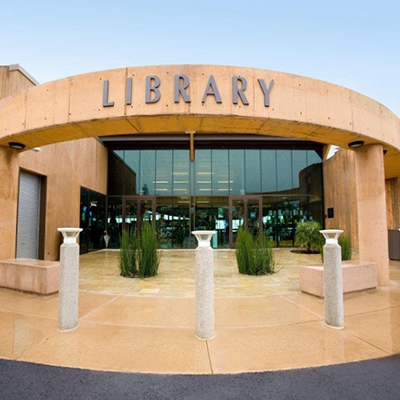References: Child/Youth/Emerging Readers ~ Literacy Development & Literacy Programming
Articles and presentations authored or co-authored by guests attending the event are displayed in bold text.
- Barratt-Pugh, C., & Allen, N. “Making a difference: Findings from Better Beginnings a family literacy intervention programme.” The Australian Library Journal (2011). 60(3), 195-204.
- Braga, L.W., Amemiya, E., Tauil, A., Suguieda, D., Lacerda, C., Klein, E., Dehaene-Lambertz, G. and Dehaene, S. “Tracking Adult Literacy Acquisition With Functional MRI: A Single-Case Study. Mind, Brain, and Education.” (2017) 11: 121-132. https://doi.org/10.1111/mbe.12143
- Burton, H and Navsaria, D. “Evaluating the Effect of Reach Out and Read on Clinic Values, Attitudes, and Knowledge.” WMJ : official publication of the State Medical Society of Wisconsin 118 (2019): 181.
- Cahill, Maria, Soohyung Joo, and Kathleen Campana. “Analysis of Language Use in Public Library Storytimes.” Journal of Librarianship and Information Science 52, no. 2 (June 2020): 476–84. https://doi.org/10.1177/0961000618818886.
- Celano, Donna, and Susan B. Neuman. 2001. The role of public libraries in children’s literacy development: an evaluation report. Harrisburg, Pa: Pennsylvania Department of Education, Office of Commonwealth Libraries.
- Coates, K., & Thompson, D. “Innovative Education: Information Literacy Planning reframed as Design Thinking.” Georgia International Conference on Information Literacy 2020.
- Coates, Kay. “Information Literacy re-imagined: Deep Learning practice.” (2021).
- Connery, D. “Connecting with Teens Through eSports.” Young Adult Literacy Services Journal (YALS) (2020) 18:2http://yalsjournal.ala.org/publication/?m=53337&i=651577&p=22
- Copeland, CA & Martin, M. “Camp Read-a-Rama® and Fully-Engaged Literacy Learning: Implications for LIS Education.” (2016):57(2):112
- Crist, B, C V. Donovan, M Doran-Myers and L Hofschire. “Supporting Parents in Early Literacy through Libraries (SPELL): An Evaluation of a Multi-Site Library Project.” Public Library Quarterly 39 (2020): 89-101.
- Dahlen, S P. “We Need Diverse Books’: Diversity, Activism, and Children’s Literature.” In Literary Cultures and Twenty-First Century Childhoods (2020), edited by Nathalie op de Beeck. Palgrave.
- Dahlen, S P and Paul L. “Asian Americans in Story: Context, Collections, and Community Engagement with Children’s and Young.” ALA Editions. (under contract and in progress).
- Del Negro, J M. and M A. Kimball. Engaging teens with story: How to inspire and educate youth with storytelling. n.p.: ABC-CLIO, 2017.
- Espinal, I., Sutherland, T., and Roh, C. “A Holistic Approach for Inclusive Librarianship: Decentering Whiteness in Our Profession.” Library Trends 67, no. 1 (2018): 147–162.
- Evans, Mariah Debra, Jonathan Kelley, Joanna Sikora and Donald J. Treiman. “Family scholarly culture and educational success: Books and schooling in 27 nations.” Research in Social Stratification and Mobility 28 (2010): 171-197.
- Friedman, A. “Three-year-old photographers: Educational mediation as a basis for visual literacy via digital photography in early childhood.” Journal of Media Literacy Education, 8(2016): 15-31.
- Friedman, Arielle. “To “read” and “write” pictures in early childhood: multimodal visual literacy through Israeli children’s digital photography.” Journal of Children and Media 12 (2018): 312 – 328.
- Fricke, J, Navsaria, D and Mahony, K. “Effectiveness of a Clinic-Based Early Literacy Program in Changing Parent-Child Early Literacy Habits.” WMJ : official publication of the State Medical Society of Wisconsin 115 (2016): 305.
- Guthrie, John T., and Kathleen E. Cox. “Classroom Conditions for Motivation and Engagement in Reading.” Educational Psychology Review 13, no. 3 (2001): 283–302. http://www.jstor.org/stable/23363481.
- Hedemark, Å & Lindberg J. “Babies, Bodies, and Books—Librarians’ Work for Early Literacy.” Library Trends 66, no. 4 (2018): 422-441. doi:10.1353/lib.2018.0011.
- Hill, C, M Profitt and S Streams. “IMLS Focus: Learning in Libraries.” Kansas City Public Library. (retrieved January 21, 2022).
- Hur, Jin Hee, Patricia A. Snyder and Brian Reichow. “Systematic Review of English Early Literacy Interventions for Children Who Are Dual Language Learners.” Topics in Early Childhood Special Education 40 (2020): 23 – 6.
- Kamil, M. L., Borman, G. D., Dole, J., Kral, C. C., Salinger, T., & Torgesen, J. “Improving Adolescent Literacy: Effective Classroom and Intervention Practices”. IES Practice Guide (2008). National Center for Education Evaluation and Regional Assistance.
- MacGillivray, Laurie, Amy Lassiter Ardell, and Margaret Sauceda Curwen. “Libraries, Churches, and Schools: The Literate Lives of Mothers and Children in a Homeless Shelter.” Urban Education 45, no. 2 (March 2010): 221–45. https://doi.org/10.1177/0042085908322721.
- Mangen, Anne, Bente Rigmor Walgermo and Kolbjørn Brønnick. “Reading linear texts on paper versus computer screen: Effects on reading comprehension.” International Journal of Educational Research 58 (2013): 61-68.
- Marsh J. “Global, local/public, private: Young children’s engagement in digital literacy practices in the home”. In: Pahl K and Rowsell J (eds) Travel Notes from the New Literacy Studies (2006). Clevedon: Multilingual Matters.
- McKenzie, P J. and R K. Stooke. “Making a difference: The importance of purposes to early learning programs.” Children & Libraries 10 (2012): 47.
- Navsaria, D and Sanders, L M. “Early Literacy Promotion in the Digital Age.” Pediatric clinics of North America 62 (2015): 1295.
- Nichols, Sue. “Young Children’s Literacy in the Activity Space of the Library: A Geosemiotic Investigation.” Journal of Early Childhood Literacy 11, no. 2 (June 2011): 164–89. https://doi.org/10.1177/1468798411399275.
- Noll, Elizabeth, and Watkins, Robins. “The Impact of Homelessness on Children’s Literacy Experiences.” The Reading Teacher 57, no. 4 (2003): 362–71. http://www.jstor.org/stable/20205371.
- Rhinesmith, C. & Kennedy, S. “Growing Healthy Digital Equity Ecosystems During COVID-19 and Beyond.” Benton Institute for Broadband & Society. 2020.
- Ryan, C. L., & Hermann-Wilmarth, J. M. “Reading the rainbow: LGBTQ-inclusive literacy instruction in the elementary classroom.” Teachers College Press. 2018
- Salinger, T. “Assessing the literacy of young children: The case for multiple forms of evidence.” Handbook of early literacy research (2001):11-29
- Sikora, J and J Kelley. “Scholarly culture: How books in adolescence enhance adult literacy, numeracy and technology skills in 31 societies.” Social science research (2019): 1-15.
- Støle, Hildegunn, Anne Mangen and Knut Schwippert. “Assessing children’s reading comprehension on paper and screen: A mode-effect study.” Comput. Educ. 151 (2020): 103861.
- Subramaniam, M., Scaff, L., Kawas, S., Hoffman, K. M., & Davis, K. “Using technology to support equity and inclusion in youth library programming: Current practices and future opportunities”. The Library Quarterly (2018): 88(4), 315-331.
- Taylor, N A., D Greenberg and N P. Terry. “The relationship between parents’ literacy skills and their preschool children’s emergent literacy skills.” COABE Journal 5 (2016): 5.
- Terrile, V C. “Library Services to Children, Teens and Families Experiencing Homelessness.” Urban Library Journal (2009):15(22)
- Walker-Dalhouse, D. “Homelessness, poverty, and children’s literacy development.” The Reading Teacher 62 (2008): 84-86.
- Wolf, M and C J. Stoodley. Proust and the squid: The story and science of the reading brain (p. 336). New York: Harper Perennial, 2008.
- Wolf, M, M Barzillai and J Dunne. “The importance of deep reading.” Challenging the whole child: reflections on best practices in learning, teaching, and leadership, 130, 21. (retrieved January 24, 2022).
- Young, T., Sarroub, L., & Babchuk, W. “Literacy Access through Storytime: An Ethnographic Study of Public Library Storytellers in a Low-Income Neighborhood.” Journal of Ethnographic & Qualitative Research (2019):14, 59–77
- Zhou, J, A Baulos, J J. Heckman and B Liu. 5 The Economics of Investing in Early Childhood. The Scale-Up Effect in Early Childhood and Public Policy: Why Interventions Lose Impact at Scale and What We Can Do About It, 2021.

Social Wellbeing &
Community Development
Community Development

Investing in Libraries &
Library Staff
Library Staff

Child Literacy Development & Literacy Programming


